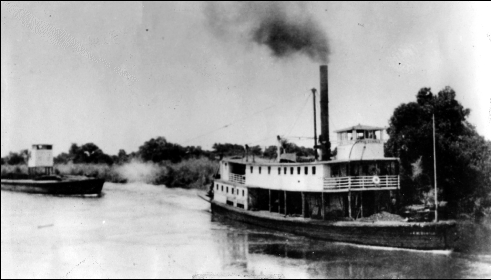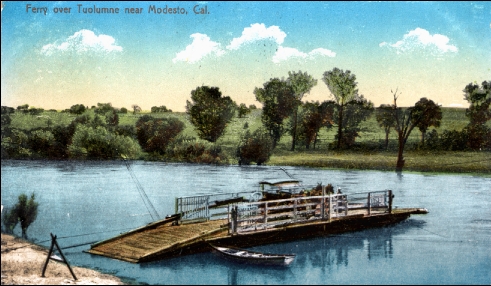Early Regional History
Explorers and Settlements The area which is now Stanislaus County was discovered by Lieutenant Gabriel Moraga, a Spanish soldier. He was the son of Jose Joaquin Moraga, the founder of Yerba Buena (San Francisco), according to Tinkham. It was 1808, and Moraga, accompanied by 25 men, set out from the mission at San Juan Bautista with Padre Pedro Munoz. The ultimate purpose of Moraga's inland foray was to find a spot to found a mission, which never reached fruition.
From 1820 through 1830, hunters and trappers were the only visitors to the region. In 1832, the Hudson Bay Company first established "French Camp" rendezvous and trapped the valley rivers. Captain John C. Fremont camped on the rivers in the area in 1841, writing, "Emerging from the timber, we came suddenly upon the Stanislaus River where we hoped to find a ford, but the stream was flowing by, dark and deep, swollen by mountain snows. . ."
First Settlement, Gold Rush and a New State Tinkham's history cites the first settlement in the Stanislaus region as the Mormon colony of Stanislaus City or New Hope. The Mormons were part of a contingent that had traveled to Yerba Buena from New York hoping to find a place where they could worship unmolested. Samuel Brannan, the leader of the Mormon group, wrote in 1847, "We have commenced a settlement on the Stanislaus River, a large and beautiful stream emptying into the Bay of San Francisco." The colony lasted a short time, according to Tinkham, because of a disagreement among the settlers, however subsequent histories also state that Brannan tried to convince Brigham Young to settle in California, but the California Mormons were called back to the Valley of Great Salt Lake.
With James W. Marshall's discovery of gold and the subsequent gold rush of 1849, a stampede of people flooded California, all seeking their fortunes. Brannan, who had stayed in the state, was said to have started the stampede. "Sam Brannan strode down the main street of San Francisco shouting, 'Gold! Gold! Gold! from the American River.'" Tinkham says that in less than two years 100,000 people inhabited the new state. Many stayed to establish towns and cities in Northern California.
On September 9, 1850, California became the 39th state in the United States. The territory was divided into 27 counties, which would soon increase to an eventual total of 58.
Ferry Crossings Along the Rushing Rivers Once the 49ers started their treks to the Mother Lode, in order to ford the rushing rivers from the valleys to the foothills and beyond, ferries sprang up everywhere along the Tuolumne and Stanislaus rivers, moved from here to there for convenience sake. Hillgard and Burman Ferry was established on the Stanislaus in 1850. Burneyville Ferry was located where the city of Riverbank now stands, along with Keeler's Ferry and Knight's Ferry on the Stanislaus River route to gold.
On the Tuolumne River there was Grayson Ferry, Tuolumne City, Paradise City, Adamsville, Westport Landing, Whitmore Ferry, Empire City, Baker's Ferry (now Waterford), Robert's Ferry and La Grange - these were "stopping places and villages that served the area." In "Stanislaus County - 100 Years of Progress," compiled for Stanislaus County Schools in 1954, there is a note that, "The settlements that grew prosperous and continued to grow were those closest to the mines. Gold was the main reason for their existence." Two historic towns still standing that were important centers before the county was formed were La Grange on the Tuolumne and Knights Ferry on the Stanislaus.
| ||
|
|
|



